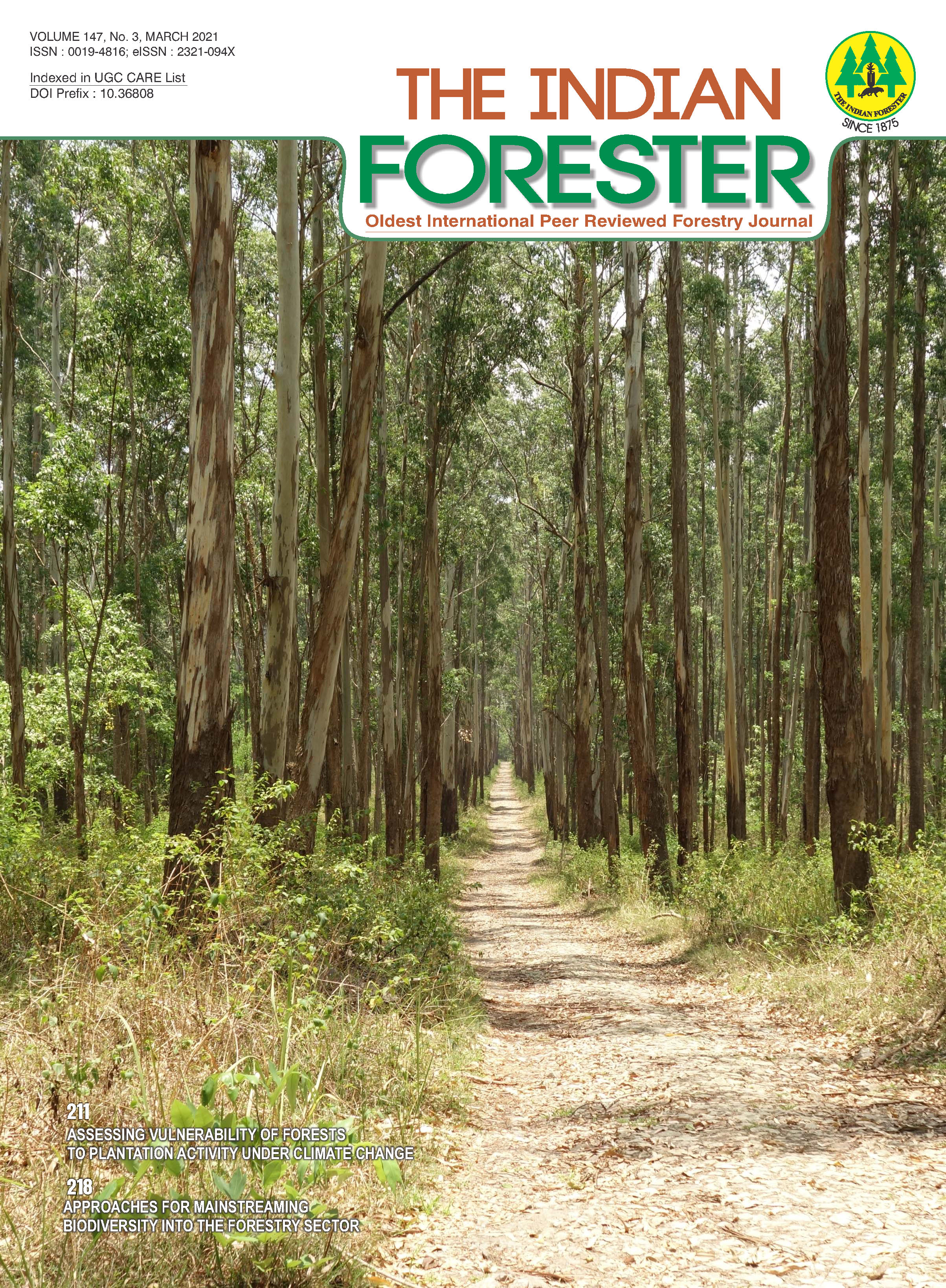Automation of Forest Fire Detection and Burnt Area Assessment using integrated GIS with Advanced Spatial Data Sciences for the Rudraprayag Forest Division, Uttarakhand
DOI:
https://doi.org/10.36808/if/2021/v147i3/157737Keywords:
Forest Fire, Burnt Area Assessment, Deep Learning, Remote Sensing, GIS.Abstract
Forest fire is one of the hazards that disrupts the forests and need to be monitored and managed to have a productive forest ecosystem. Forest fires pose threat to the flora and fauna and may upset the biodiversity of a region. The near real-time detection of fires using satellite-based observations has been useful in forest fire monitoring and burnt area assessment. The authors present the application of GIS environment and automation of the entire process for the near real-time forest fire detection and mapping of burnt area. The assessment was done for the Rudraprayag forest division of Mandakini Valley in the Rudraprayag district of Uttarakhand, India. The region has rich flora and fauna and faces forest fires every year leading to colossal loss. Freely available Landsat 8 and Sentinel 2 Imagery were used for the fire detection and burnt area mapping. Results were compared with the fire alerts shared by the Forest Survey of India (FSI). As FSI considers MODIS, SNPP/VIIRS data with resolutions 1 km and 375 m respectively, a large deviation was observed from the actual fire locations. Advance data science tools provide an opportunity to perform fire detection and burnt area assessment with improved accuracy. The authors successfully demonstrated here the application of advance data analytics to perform fire detection and burnt area mapping using GIS environment in an automated way. The protocol developed and adopted here can be used for other study regions of the globe to monitor and manage forest fires.References
Chuvieco E., Aguado I., Yebra M., Nieto H., Salas J., MartÃn M.P., Vilar L., MartÃnez J., MartÃn S. and Ibarra P. (2010). Development of a framework for fire risk assessment using remote sensing and geographic information system technologies. Ecol. Modell. 221: 46-58.
Costanza R., Fisher B., Mulder K., Liu S. and Christopher T. (2007). Biodiversity and ecosystem services: A multi-scale empirical study of the relationship between species richness and net primary production. Ecol. Econ., 61: 478-491.
Crutzen P.J. and Andreae M.O. (1990). Biomass burning in the tropics: Impact on atmospheric chemistry and biogeochemical cycles. Science (80-.). 250: 1669-1678.
FAO (2007). Fire management - global assessment 2006. Food and Agriculture Organisation of the United Nations, Rome.
FSI (2011). Forest types of India. Forest Survey of India, Ministry of Environment, Forest and Climate Change, Government of India, Dehradun.
Hao W.M., Ward D.E., Olbu G. and Baker S.P. (1996). Emissions of CO2, CO, and hydrocarbons from fires in diverse African savanna ecosystems. J. Geophys. Res. Atmos. 101: 23577-23584.
Jaiswal R.K., Mukherjee S., Raju K.D. and Saxena R. (2002). Forest fire risk zone mapping from satellite imagery and GIS. Int. J. Appl. Earth Obs. Geoinf., 4: 1-10.
Joshi S., Garg J. and Amarjeet K. (2020). GIS based Landslides Susceptibility Mapping using Probabilistic Certainty Factor for Hazard Zonation in Mandakini Valley. Int. J. Recent Technol. Eng. 8: 398-404.
Kumar M., Kalra N., Khaiter P., Ravindranath N.H., Singh V., Singh H., Sharma S. and Rahnamayan S. (2019a). PhenoPine: A simulation model to trace the phenological changes in Pinus roxhburghii in response to ambient temperature rise. Ecol. Modell. 404, 12-20. https://doi.org/10.1016/j.ecolmodel.2019.05.003
Kumar M., Padalia H., Nandy S., Singh H., Khaiter P. and Kalra N. (2019b). Does spatial heterogeneity of landscape explain the process of plant invasion? A case study of Hyptis suaveolens from Indian Western Himalaya. Environ. Monit. Assess. 191, 794. https://doi.org/https://doi.org/10.1007/s10661-019-7682-y
Kumar M., Rawat S.P.S., Singh H., Ravindranath N.H. and Kalra N. (2018). Dynamic forest vegetation models for predicting impacts of climate change on forests: An Indian perspective. Indian J. For., 41: 1-12.
Kumar M., Singh H., Pandey R., Singh M.P., Ravindranath N.H. and Kalra N. (2019c). Assessing vulnerability of forest ecosystem in the Indian Western Himalayan region using trends of net primary productivity. Biodivers. Conserv., 28: 2163-2182.
Kumar M., Singh M.P., Singh H., Dhakate P.M. and Ravindranath N.H. (2019d). Forest working plan for the sustainable management of forest and biodiversity in India. J. Sustain. For., 1-22. https://doi.org/10.1080/10549811.2019.1632212
Lentile L.B., Holden Z.A., Smith A.M.S., Falkowski M.J., Hudak A.T., Morgan P., Lewis S.A., Gessler P.E. and Benson N.C. (2006). Remote sensing techniques to assess active fire characteristics and post-fire effects. Int. J. Wildl. Fire, 15: 319-345.
Murthy M.S.R., Badarinath K.V.S., Gharai B., Rajshekhar G. and Roy P.S. (2006). The Indian forest fire response and assessment system (INFFRAS). Int. For. Fire News, 34: 72-77.
Savita, Kumar M. and Kushwaha S.P.S. (2018). Forest Resource Dependence and Ecological Assessment of forest Fringes in Rainfed Districts of India. Indian For., 144: 211 220.
Singh R.K., Sinha V.S.P., Joshi P.K. and Kumar M. (2020). Modelling Agriculture, Forestry and Other Land Use (AFOLU) in response to climate change scenarios for the SAARC nations. Environ. Monit. Assess. 192: 1-18.
Downloads
Downloads
Additional Files
Published
How to Cite
Issue
Section
License
Unless otherwise stated, copyright or similar rights in all materials presented on the site, including graphical images, are owned by Indian Forester.





